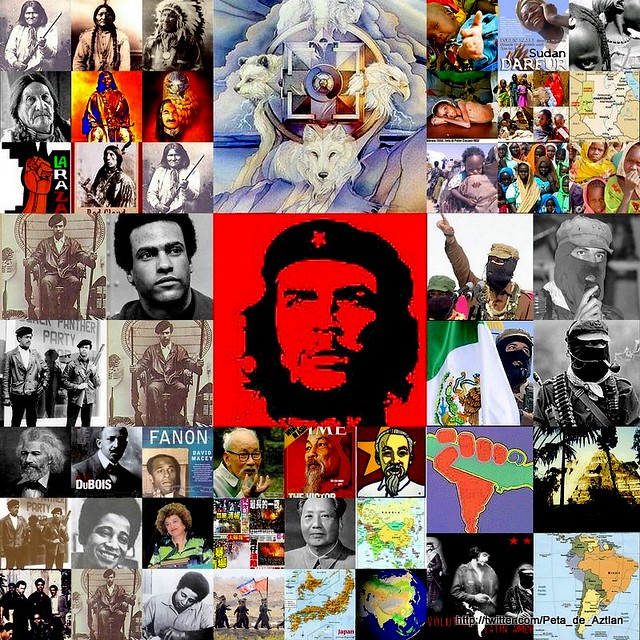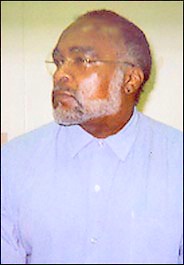Request for Clemency by Stanley Williams
Stanley Williams has been convicted of brutally murdering four people during two separate armed robberies in February and March 1979. A California jury sentenced him to death, and he is scheduled for execution on December 13, 2005.During the early morning hours of February 28, 1979, Williams and three others went on a robbery spree. Around 4 a.m., they entered a 7-Eleven store where Albert Owens was working by himself. Here, Williams, armed with his pumpaction shotgun, ordered Owens to a backroom and shot him twice in the back while he lay face down on the floor. Williams and his accomplices made off with about $120 from the store’s cash register. After leaving the 7-Eleven store, Williams told the others that he killed Albert Owens because he did not want any witnesses.
Later that morning, Williams recounted shooting Albert Owens, saying “You should have heard the way he sounded when I shot him.” Williams then made a growling noise and laughed for five to six minutes.
On March 11, 1979, less than two weeks later, Williams, again armed with his shotgun, robbed a family-operated motel and shot and killed three members of the family: (1) the father, Yen-I Yang, who was shot once in the torso and once in the arm while he was laying on a sofa; (2) the mother, Tsai-Shai Lin, who was shot once in the abdomen and once in the back; and (3) the daughter, Yee-Chen Lin, who was shot once in her face. For these murders, Williams made away with approximately $100 in cash. Williams also told others about the details of these murders and referred to the victims as “Buddha-heads.”
Now, his appeals exhausted, Williams seeks mercy in the form of a petition for clemency. He claims that he deserves clemency because he has undergone a personal transformation and is redeemed, and because there were problems with his trial that undermine the fairness of the jury’s verdict.
Williams’ case has been thoroughly reviewed in the 24 years since his convictions and death sentence. In addition to his direct appeal to the California Supreme Court, Williams has filed five state habeas corpus petitions, each of which has been rejected. The federal courts have also reviewed his convictions and death sentence. Williams filed a federal habeas corpus petition, and the U.S. District
Statement of Decision
Request for Clemency by Stanley Williams
Page 2 of 5
Court denied it. The Ninth Circuit Court of Appeals confirmed this decision.1
Williams was also given a number of post-trial evidentiary hearings, and he and his lawyers had the opportunity at these hearings to present evidence that was not heard at trial. The jury’s decision has withstood these challenges.
In all, Williams’ case has been the subject of at least eight substantive judicial opinions.2 Prior to the filing of the clemency petition, the state court habeas process was completed on June 21, 1995 when the California Supreme Court denied Williams’ fourth state habeas corpus petition.3 The federal court habeas process was completed on October 11, 2005 when the United States Supreme Court denied Williams’ writ of certiorari.
The claim that Williams received an unfair trial was the subject of this extensive litigation in the state and federal courts. The courts considered the sufficiency of his counsel, the strategic nature of counsel’s decisions during the penalty phase of Williams’ trial, the adequacy and reliability of testimony from informants, whether Williams was prejudiced by security measures employed during his trial, whether he was competent to stand trial, whether the prosecutor impermissibly challenged potential jurors on the basis of race, and whether his jury was improperly influenced by Williams’ threats made against them. There is no need to rehash or second guess the myriad findings of the courts over 24 years of litigation.
The possible irregularities in Williams’ trial have been thoroughly and carefully reviewed by the courts, and there is no reason to disturb the judicial decisions that uphold the jury’s decisions that he is guilty of these four murders and should pay with his life.
__________
1 Some have suggested that the U.S. Court of Appeals for the Ninth Circuit has endorsed Mr. Williams request for clemency. (Williams v. Woodford (2004) 384 F.3d 567, 628.) However, a careful reading of the opinion shows that Ninth Circuit panel merely noted that Williams’ redemption arguments were properly addressed to the Governor, not the court, without expressing an opinion on the appropriateness of clemency.
2 People v. Williams (1988) 44 Cal.3d 1127 [direct appeal and state habeas corpus petition]; In re Stanley Williams
(1994) 7 Cal.4th 572 [state habeas corpus petition]; Williams v. Calderon (C.D. Cal. 1998) 41 F.Supp.2d 1043 [federal habeas corpus petitions]; Williams v. Calderon (C.D. Cal. 1998) 48 F.Supp.2d 979 [federal habeas corpus petition]; Williams v. Calderon (C.D. Cal. 1998) 1998 WL 1039280 [request for discovery for federal habeas corpus petition]; Williams v. Calderon (C.D. Cal. 1999) 1999 WL 1320903 [motion for relief of judgment on federal habeas corpus petition]; Williams v. Woodford (9th Cir. 2004) 384 F.3d 567 [affirming denial of federal habeas corpus petition]; Williams v. Woodford (9th Cir. 2005) 396 F.3d 1059 [denying petition for rehearing en banc, with dissent].___
3 On December 10, 2005, Williams’ counsel filed a fifth habeas corpus petition in the California Supreme Court. On December 11, 2005, the Court unanimously denied his petition.
Statement of Decision
Request for Clemency by Stanley Williams
Page 3 of 5
The basis of Williams’ clemency request is not innocence. Rather, the basis of the request is the “personal redemption Stanley Williams has experienced and the positive impact of the message he sends.”4 But Williams’ claim of innocence remains a key factor to evaluating his claim of personal redemption. It is impossible to separate Williams’ claim of innocence from his claim of redemption.
Cumulatively, the evidence demonstrating Williams is guilty of these murders is strong and compelling. It includes: (1) eyewitness testimony of Alfred Coward, who was one of Williams’ accomplices in the 7-Eleven shooting; (2) ballistics evidence proving that the shotgun casing found at the scene of the motel murders was fired from Williams’ shotgun; (3) testimony from Samuel Coleman that Williams confessed that he had robbed and killed some people on Vermont Street (where the motel was located); (4) testimony from James and Esther Garrett that Williams admitted to them that he committed both sets of murders; and (5) testimony from jailhouse informant George Oglesby that Williams confessed to the motel murders and conspired with Oglesby to escape from county jail. The trial evidence is bolstered by information from Tony Sims, who has admitted to being an accomplice in the 7-Eleven murder. Sims did not testify against Williams at trial, but he was later convicted of murder for his role in Albert Owens’ death.
During his trial and subsequent parole hearings, Sims has repeatedly stated under oath that Williams was the shooter.
Based on the cumulative weight of the evidence, there is no reason to second guess the jury’s decision of guilt or raise significant doubts or serious reservations about Williams’ convictions and death sentence. He murdered Albert Owens and Yen-I Yang, Yee-Chen Lin and Tsai-Shai Lin in cold blood in two separate incidents that were just weeks apart.
But Williams claims that he is particularly deserving of clemency because he has reformed and been redeemed for his violent past. Williams’ claim of redemption triggers an inquiry into his atonement for all his transgressions. Williams protests that he has no reason to apologize for these murders because he did not commit them. But he is guilty and a close look at Williams’ post-arrest and postconviction conduct tells a story that is different from redemption.
After Williams was arrested for these crimes, and while he was awaiting trial, he conspired to escape from custody by blowing up a jail transportation bus and
__________
4 Williams’ Clemency Reply, p. 10.
Statement of Decision
Request for Clemency by Stanley Williams
Page 4 of 5
killing the deputies guarding the bus. There are detailed escape plans in Williams’ own handwriting. Williams never executed this plan, but his co-conspirator implicated Williams in the scheme. The fact that Williams conspired to murder several others to effectuate his escape from jail while awaiting his murder trial is consistent with guilt, not innocence. And the timing of the motel murders—less than two weeks after the murder of Albert Owens—shows a callous disregard for human life.
Williams has written books that instruct readers to avoid the gang lifestyle and to stay out of prison.5 In 1996, a Tookie Speaks Out Against Gang Violence children’s book series was published. In 1998, “Life in Prison” was published. In 2004, Williams published a memoir entitled “Blue Rage, Black Redemption.” He has also recently (since 1995) tried to preach a message of gang avoidance and peacemaking, including a protocol for street peace to be used by opposing gangs.
It is hard to assess the effect of such efforts in concrete terms, but the continued pervasiveness of gang violence leads one to question the efficacy of Williams’ message. Williams co-founded the Crips, a notorious street gang that has contributed and continues to contribute to predatory and exploitative violence. 6
The dedication of Williams’ book “Life in Prison” casts significant doubt on his personal redemption. This book was published in 1998, several years after Williams’ claimed redemptive experience. Specifically, the book is dedicated to “Nelson Mandela, Angela Davis, Malcolm X, Assata Shakur, Geronimo Ji Jaga Pratt, Ramona Africa, John Africa, Leonard Peltier, Dhoruba Al-Mujahid, George Jackson, Mumia Abu-Jamal, and the countless other men, women, and youths who have to endure the hellish oppression of living behind bars.” The mix of individuals on this list is curious. Most have violent pasts and some have been convicted of committing heinous murders, including the killing of law enforcement.
__________
5 Williams’ perennial nominations for the Nobel Peace Prize and Nobel Prize in Literature from 2001-2005 and the receipt of the President’s Call to Service Award in 2005 do not have persuasive weight in this clemency request.
6 Breaking the cycle of hopelessness and gang violence is the responsibility of us all, not just the most affected African-American or inner city communities. It is important to work together with respect, understanding and patience if we are to one day succeed.
Statement of Decision
Request for Clemency by Stanley Williams
Page 5 of 5
But the inclusion of George Jackson on this list defies reason and is a significant indicator that Williams is not reformed and that he still sees violence and lawlessness as a legitimate means to address societal problems.7
There is also little mention or atonement in his writings and his plea for clemency of the countless murders committed by the Crips following the lifestyle Williams once espoused. The senseless killing that has ruined many families, particularly in African-American communities, in the name of the Crips and gang warfare is a tragedy of our modern culture. One would expect more explicit and direct reference to this byproduct of his former lifestyle in Williams’ writings and apology for this tragedy, but it exists only through innuendo and inference.
Is Williams’ redemption complete and sincere, or is it just a hollow promise?
Stanley Williams insists he is innocent, and that he will not and should not
apologize or otherwise atone for the murders of the four victims in this case.
Without an apology and atonement for these senseless and brutal killings there can be no redemption. In this case, the one thing that would be the clearest indication of complete remorse and full redemption is the one thing Williams will not do.
Clemency decisions are always difficult, and this one is no exception. After
reviewing and weighing the showing Williams has made in support of his
clemency request, there is nothing that compels me to nullify the jury’s decision of guilt and sentence and the many court decisions during the last 24 years upholding the jury’s decision with a grant of clemency.
Therefore, based on the totality of circumstances in this case, Williams’ request for clemency is denied.
DATED: December 12, 2005 ___________________________________
ARNOLD SCHWARZENEGGER
Governor of the State of California
__________
7George Jackson was a militant activist and prison inmate who founded the violent Black Guerilla Family prison gang. Jackson was charged with the murder of a San Quentin correctional officer. In 1970, when Jackson was out to court in Marin County on the murder case, his brother stormed the courtroom with a machine gun, and along with Jackson and two other inmates, took a judge, the prosecutor and three others hostage in an escape attempt. Shooting broke out. The prosecutor was paralyzed from a police bullet, and the judge was killed by a close-range blast to his head when the shotgun taped to his throat was fired by one of Jackson’s accomplices. Jackson’s brother was also killed. Then, three days before trial was to begin in the correctional officer murder case, Jackson was gunned down in the upper yard at San Quentin Prison in another foiled escape attempt on a day of unparalleled violence in the prison that left three officers and three inmates dead in an earlier riot that reports indicate also involved Jackson.
zzzzz
Websource=
http://graphics8.nytimes.com/packages/pdf/national/Williams_Clemency_Decision.pdf



No comments:
Post a Comment